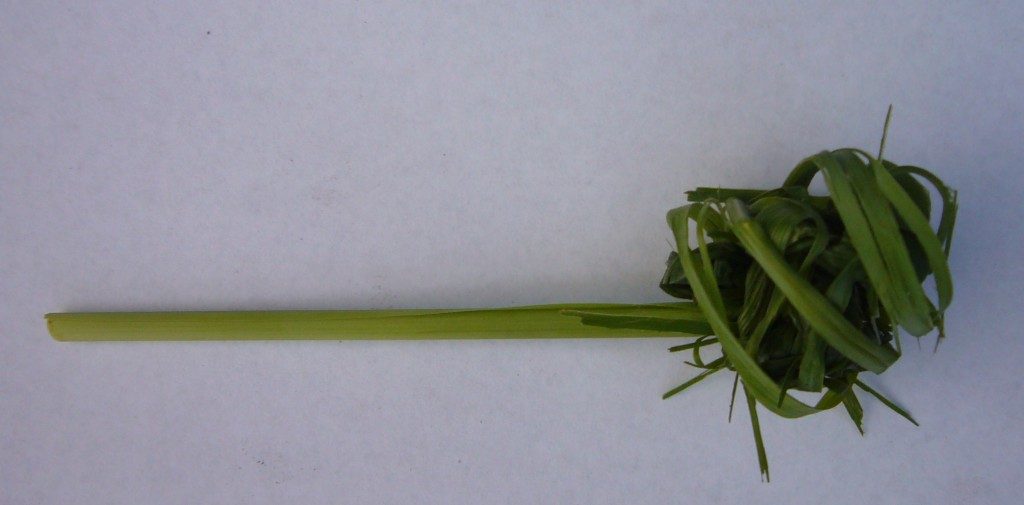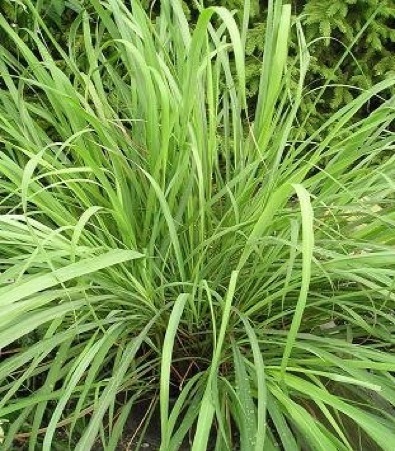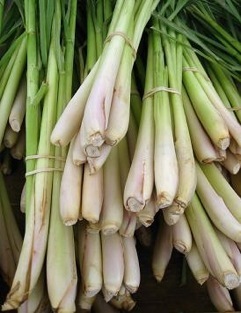Cymbopogon citratus: A Real Lemon
Technically Lemon Grass is naturalized in only one county in Florida, but you can find it in many yards and landscaping, and in several warm states and northern flower pots.
I’ve grown two lemon grasses. One I got from a Chinese grocery that had some roots on it — locally grown — and one from a fru-fru farmers’ market in Winter Park. I called one Chinese and the other was supposedly from India. After watching them for about ten years I think they are the same species, and they have spread easily in my yard. In fact, if I don’t mow — and I hate to mow — the lemon grass will quickly sprout from underground roots, though it also seeds. The only place I take it out is where it threatens to overshadow my sassafras sapling.
Lemon grass, Cymbopogon citratus, has two culinary claims to fame. Its leaves are used to make a tea or flavor soups and the like. Yes, it tastes lemony. Its lower stalks can be chopped and also used as flavoring, or ground up for some pastes.
Cymbopogon means “boat beard” referring to its boat-shaped bracts. Citratus means lemony. In 2006 researchers found that lemon grass causes cancer cells to kill themselves, at least in the test tube. Lemon Grass did not affect healthy cells. The amount used was one gram of lemon grass in a cup of hot water. I use a heck of a lot more than that when I make lemon grass tea so I should be super safe. In fact, here’s how I make Lemon Grass tea.
I take a full blade (be careful, the edges can cut you.) I start at the bottom and begin tying the blade in knots. I keep tying until I have a big knot and enough left over for a dipping handle. Then I put it in hot water. It floats but that’s no problem. You can also use the handle to stir it with. Let it seep for a minute or two.
I have been told all native grass seed in North America is edible, and while I suspect that is true I do not know so totally for a fact. There are also imported grasses, among them Lemon Grass. I don’t know know if the seeds of that family (also called Andropogon) are edible but I doubt it.
Green Deane’s “Itemized” Plant Profile
IDENTIFICATION: Lemongrass is a clumping evergreen with narrow blades ranging blue-green to gold, edges are sharp, tiny flowers on stalk are white, cream, or green. Can grow from two to five feet high. Crushed blade has distinct aroma of lemons.
TIME OF YEAR: Year round in warm climates
ENVIRONMENT: Pprefers moist soil and full sun. Propagated by dividing the root clump. Search the bucket of lemon grass at your local Asian market for lemon grass with some roots. Take home and plant.
METHOD OF PREPARATION: Blades (leaves) soaked to make tea or flavor soups. Roots chopped up in stir fry for flavor or made into a paste. Lemongrass leaves can be dried or frozen. Dried leaves need rehydration before use.




